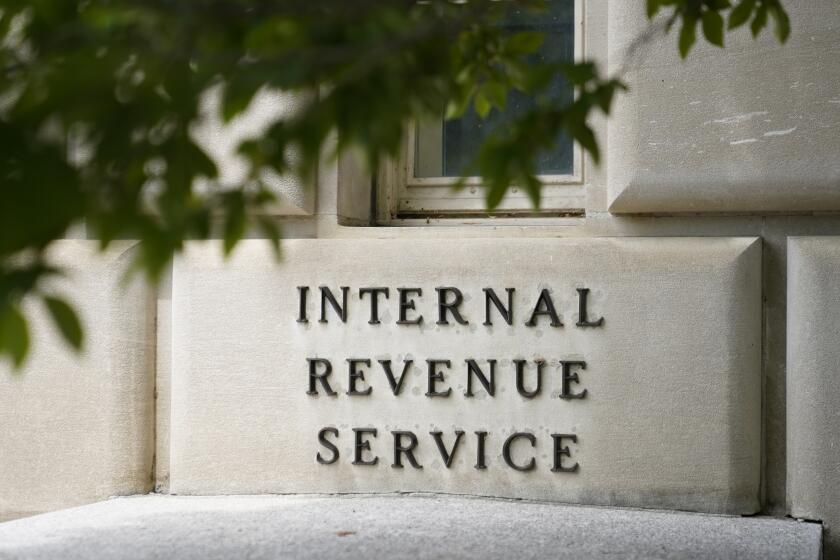Heat Is On in World Market for Light Bulbs
- Share via
You hear it everywhere these days, talk of the “global economy.” It’s the latest buzzword of business, and even Soviet leader Mikhail S. Gorbachev referred to a “single” world economy in his speech to the United Nations last December.
That sounds good, but what does it mean? Is the “global market” anything more than hype? Does it benefit anybody?
The answer is as near at hand as your light bulb--the everyday product of an industry suddenly stirring with competition.
General Electric, the leading U.S. producer of light bulbs, has just formed a joint venture with Toshiba of Japan that will increase GE’s business in the Far East. Philips Industries of the Netherlands is intensifying its assault on the U.S. lighting market. The Sylvania division of GTE is battling for market share as light bulbs flood in from West Germany, South Korea, Taiwan, Hungary and Poland.
Everybody, it seems, is reaching out for a piece of a world market that totals $8.5 billion in lighting sales. And the best part is that their competitive battles work for you.
Competition is bringing light bulb prices down and new products to market in an increasing stream.
GE is pooling research efforts with Toshiba, Japan’s light bulb leader, and the two are building a $25-million plant near Cleveland to make fluorescent lights--half of which will be exported to Japan. GE also has an energy-saving light bulb so impressive that Southern California Edison is recommending and distributing it to customers.
Meanwhile Philips--which leads in Europe and sells in Japan through a joint venture--is pushing light bulbs here with a $12-million ad campaign, incentives for supermarket operators, and a special-offer bulb that lasts one-third longer than standard light bulbs.
Sylvania is responding with advanced technology long-life bulbs, and fluorescent lights that screw into lamps as incandescent bulbs do--providing an easier-to-use product for business customers. (Residential customers generally prefer softer, incandescent light.)
‘Such a Wonderful Business’
So, clearly, global competition is the mother of invention. But the business wasn’t always so competitive. Legend has it that GE and Philips long ago had an informal agreement to split the world, Philips selling in Europe and GE selling here. But legends aside, the reality was that distance and war kept markets separate until five years ago when Philips bought Westinghouse’s lighting business.
“It’s such a wonderful business,” a GE vice president mused at the time, “I don’t see how Westinghouse could have let it go.” The Dutch giant has since built U.S. lighting sales to roughly $500 million--which trails GE’s roughly $1.5 billion U.S. sales.
Light bulbs are a highly profitable business--with automated, volume production. “GE’s operating profit margins are over 20%,” estimates analyst Albert Turner of Chicago’s Duff & Phelps research firm. That means that the humble light bulb, invented 110 years ago by Thomas Edison, is as profitable as the newest gee-whiz computer.
But the technology didn’t stop with Edison, and that’s the key to lighting’s potential today. Look no further than the fluorescent lights that glow in offices, but not in American homes. Homes in Europe and Japan use more fluorescent lighting than American houses do because it’s a big energy saver.
A fluorescent bulb lasts 20,000 hours, compared to 1,000 for an incandescent bulb, and provides three times the light for the same amount of power. The only problem is that fluorescent light is harsh to the eye and makes people look funny. But bulb makers are working on the problem, and Americans will see new types of light on to market.
And there is opportunity elsewhere as others begin to light up their lives as Americans have. (U.S. light usage, 37% of the world’s total, is greater than all of Europe or Asia.) For most of this century, the business has grown through the introduction of artificial light--a thought put poetically by an old man in Ireland’s remote Aran Islands who, when asked the most important change he had seen in fourscore years, replied: “Oh, the coming of the sudden light.”
In the 1990s, the global market will spread that light.
More to Read
Inside the business of entertainment
The Wide Shot brings you news, analysis and insights on everything from streaming wars to production — and what it all means for the future.
You may occasionally receive promotional content from the Los Angeles Times.










